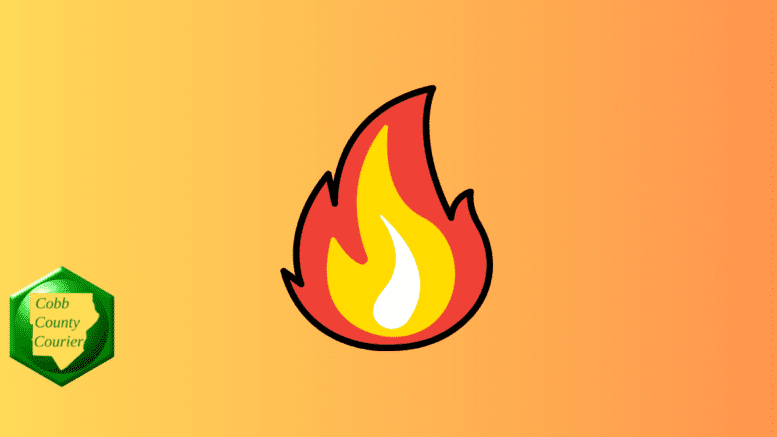The National Weather Service issued a fire weather watch for Cobb County and other counties in the region beginning Wednesday November 1 at noon. This is an escalation of the earlier high fire danger alert, and indicates the conditions could become critical.
The statement gives the following details:
…FIRE WEATHER WATCH IN EFFECT FROM WEDNESDAY AFTERNOON THROUGH
WEDNESDAY EVENING FOR LOW RELATIVE HUMIDITIES AND GUSTY WINDS IN WESTERN
AND NORTHERN GEORGIA…
The National Weather Service in Peachtree City has issued a Fire
Weather Watch for low relative humidity and gusty winds, which is
in effect from Wednesday afternoon through Wednesday evening.
* Affected Area…Western and Northern Georgia
* Timing…Late Wednesday Morning through Wednesday night.
* Winds…Northwest at 15 to 20 mph; gusting up to 30 mph.
* Relative Humidity…Minimum relative humidity values between 15
and 25 percent.
* Impacts…Due to low humidity and gusty winds in addition,
very dry fuels and ongoing drought conditions, any fires that
develop will likely spread rapidly. Outdoor burning is not
recommended.
What is a Fire Weather Watch?
The National Weather Service describes a Fire Weather Watch as follows:
A Fire Weather Watch means that there is high potential for the development of critical fire weather conditions in 12 to 96 hours. Listen for later forecasts and possible Red Flag
Warnings
Why does low relative humidity increase the danger of fire?
The National Park Service published the following explanation of why low relative humidity increases the danger of fires:
“Relative humidity is important because dead forest fuels and the air are always exchanging moisture. Low humidity takes moisture from the fuels, and fuels in turn, take moisture from the air when the humidity is high.
“Light fuels, such as grass and pine needles, gain and lose moisture quickly with changes in relative humidity. When the RH drops, fire behavior increases because these fine fuels become drier.
“Heavy fuels, on the other hand, respond to humidity changes more slowly. To see significant changes in heavy fuel moisture, there must be significant moisture, usually from more than a single storm.”
What counties are affected?
The following counties are included in the hazardous weather outlook:
Fannin-Gilmer-Union-Towns-Pickens-Dawson-Lumpkin-White-Cherokee- Forsyth-Hall-Jackson-Paulding-Cobb-North Fulton-Gwinnett-Barrow- Clarke-Oconee-Carroll-Douglas-South Fulton-DeKalb-Rockdale-Walton- Newton-Morgan-Heard-Coweta-Fayette-Clayton-Spalding-Henry-Butts- Jasper-Putnam-Troup-Meriwether-Pike-Upson-Lamar-Monroe-Jones- Baldwin-Harris-Talbot-Taylor-Crawford-Bibb-Twiggs-Wilkinson- Muscogee-Chattahoochee-Marion-Schley-Macon-Peach-Houston-Bleckley- Laurens-Stewart-Webster-Sumter-Dooly-Crisp-Pulaski-Wilcox-Dodge- Telfair
What precautions should be taken?
The National Weather Service recommends extreme caution if you do outdoor burning during high fire danger conditions, and that you check your local fire ordinances.
>> To read a summary of Cobb County’s fire ordinances follow this link
About the National Weather Service
The National Weather Service (NWS) is a part of the National Oceanic and Atmospheric Administration (NOAA).
The NWS describes its role as follows:
“The National Weather Service (NWS) provides weather, water, and climate forecasts and warnings for the United States, its territories, adjacent waters and ocean areas, for the protection of life and property and the enhancement of the national economy.
“These services include Forecasts and Observations, Warnings, Impact-based Decision Support Services, and Education in an effort to build a Weather-Ready Nation.
“The ultimate goal is to have a society that is prepared for and responds to weather, water and climate events.”
Read all the Cobb County Courier climate and weather coverage by following this link.

